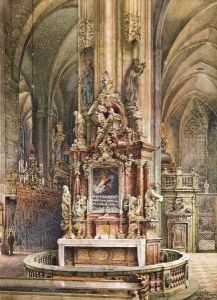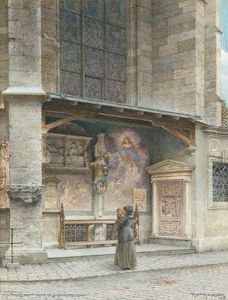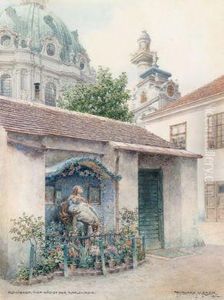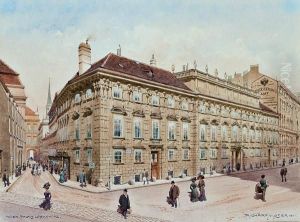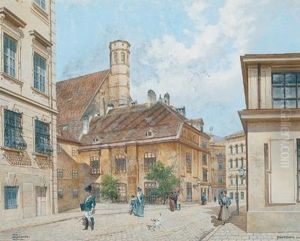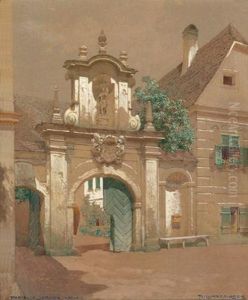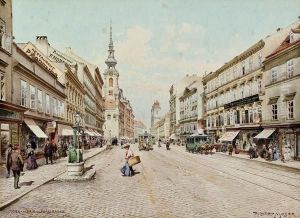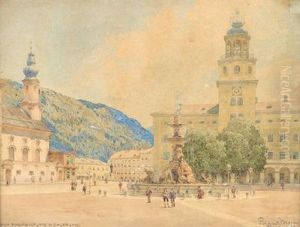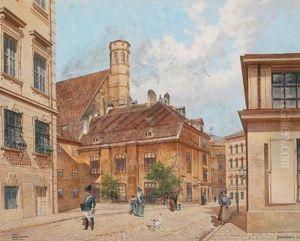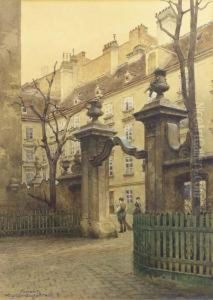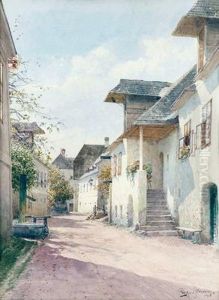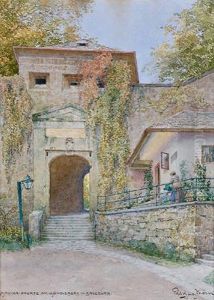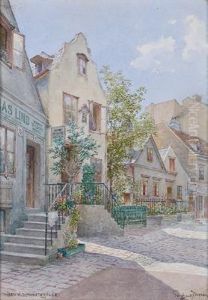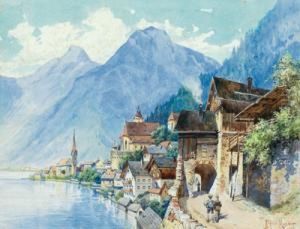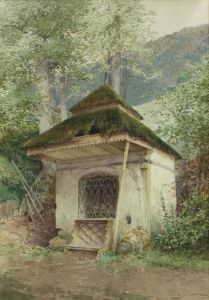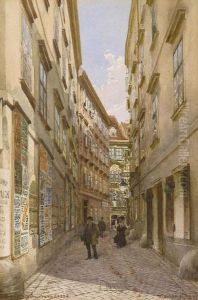Richard Moser Paintings
Richard Moser was an Austrian artist known for his graphic works, illustrations, and paintings. Born on October 17, 1874, in Graz, Austria, he was an important figure in the early 20th-century art scene in Austria. Moser studied at the Academy of Fine Arts in Vienna, where he was influenced by the Secessionist movement, which was challenging the conservative norms of the time with more modern and symbolic approaches to art.
Moser's work is characterized by a blend of traditional craftsmanship and Art Nouveau elements. He produced a variety of artworks, including book illustrations, ex-libris (bookplates), and posters. His illustrations often featured intricate designs and a clear influence from the Jugendstil movement, the German counterpart to Art Nouveau, which emphasized a linear and flowing style.
Over the course of his career, Moser contributed to several periodicals and books, bringing vivid imagery to literary works. His graphic prints and posters were also widely appreciated for their aesthetic quality and for capturing the spirit of the era.
Despite his contributions to the field of graphic art, Richard Moser is not as widely recognized as some of his contemporaries. He died on February 10, 1924, in Graz. His legacy lives on through his works, which continue to be appreciated for their artistic merit and historical significance. Moser's life and work reflect the transition in art from the traditional to the modern, which was a hallmark of the early 20th century.
